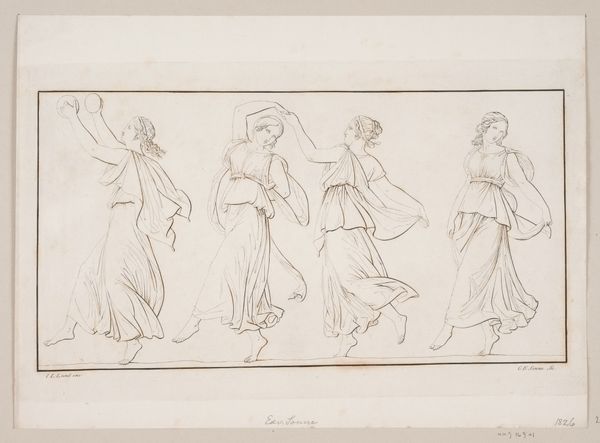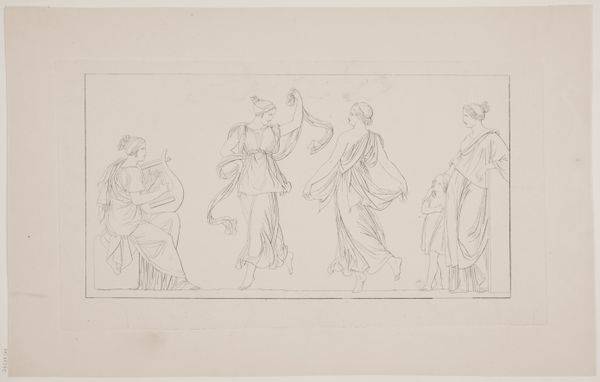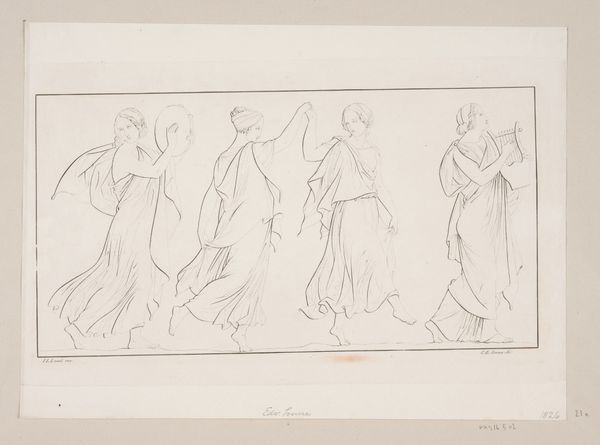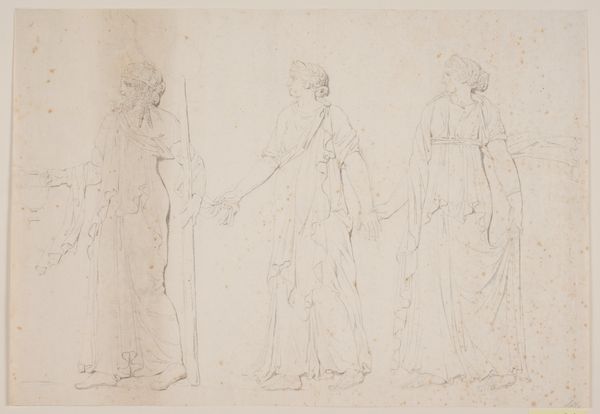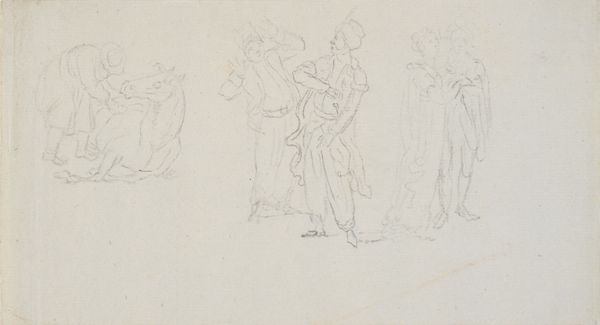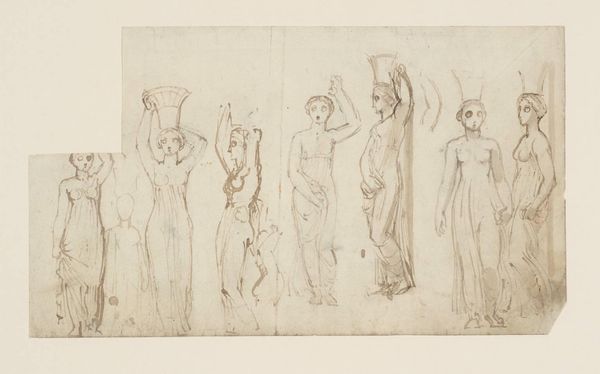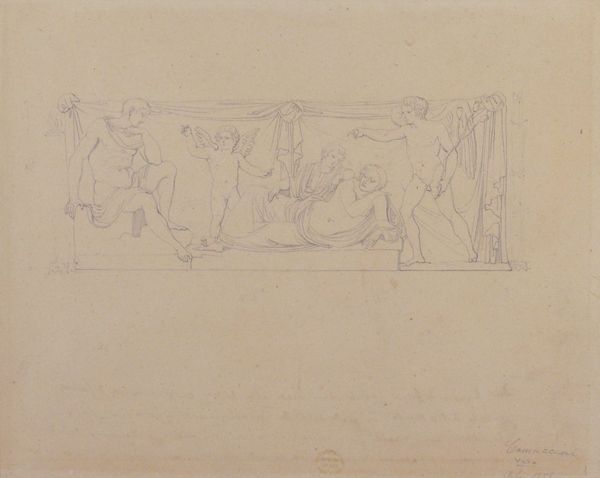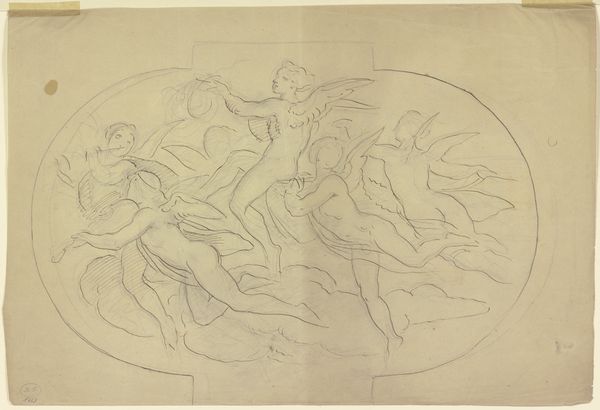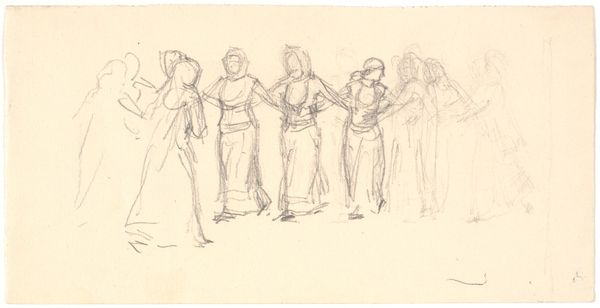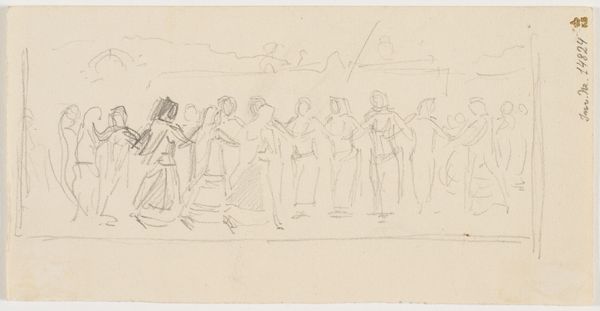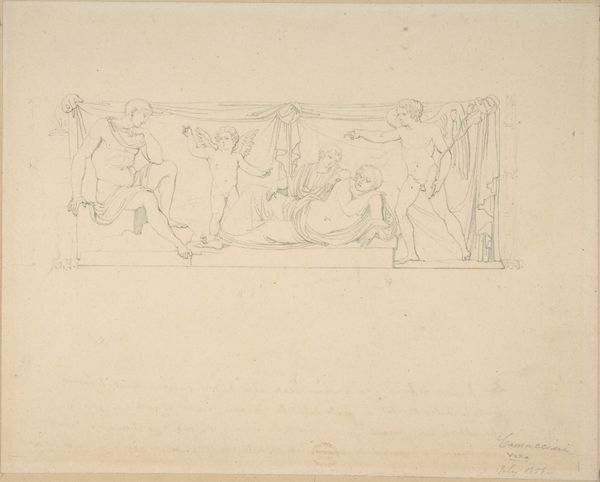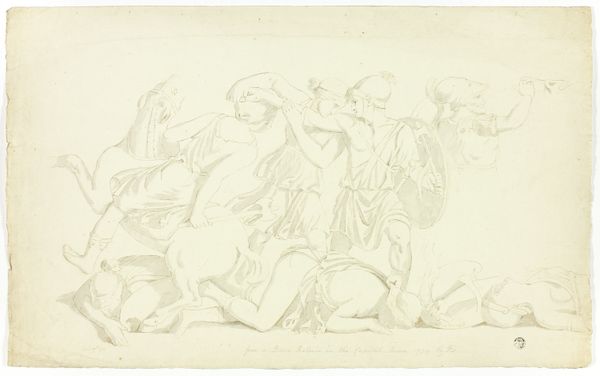
drawing, print, pencil, engraving
#
drawing
#
neoclacissism
# print
#
classical-realism
#
figuration
#
pencil
#
engraving
Dimensions: 212 mm (height) x 380 mm (width) (plademaal)
Curator: Looking at this drawing titled "Dancing Women in Ancient Drapery," by J.L. Lund, dating from around 1777 to 1867, one immediately senses the influence of Neoclassicism. Editor: Indeed. There's a quiet elegance here. The figures, rendered with such delicate lines, almost seem to float across the page. The light seems to catch them, creating a sense of movement and ethereal grace. Curator: Lund’s interest in antiquity is palpable. The flowing drapery, the poses of the women—they evoke friezes found on ancient Greek temples. We have to consider the revival of classical ideals during this period and how artists were reinterpreting them through contemporary lenses. Consider Winckelmann's influence on the conception of beauty and art during this era; he was a key figure for how classical art began influencing the art movements of the time. Editor: And those repeated figures, arranged in a row— they feel symbolic, representing a kind of continuous ritual, or even echoes of ancient mystery cults, focused on feminine energies. Dance was, after all, a central part of religious life in antiquity, evoking the godhead. Are we meant to perceive their movements as a singular flowing act, or as individual women enacting something together? Curator: That's where it becomes more than just an imitation of classical form. I think, from a feminist art historical viewpoint, we can explore how Lund portrays these women, their relationship to each other, and what stories they might be enacting within their given cultural moment. How do they exist in relation to notions of beauty and performance and in their depiction, also the patriarchy of the time? Editor: Certainly. The drapery itself becomes a kind of language. Note the fall of the cloth and the places the body becomes visible or veiled -- so central to how we interpret symbolic identity, as well as cultural standards of modesty and revelation. Curator: These nuances invite discussions about not only artistry and symbolism, but also issues of representation, societal roles, and women's agency. It's more than a simple illustration. It is a document to the era in which it was conceived, and opens interesting paths toward interpreting its history and position within the artistic landscape. Editor: Absolutely. When we study the iconography, and layers of history that shape its creation, it gives it that much more impact.
Comments
No comments
Be the first to comment and join the conversation on the ultimate creative platform.
